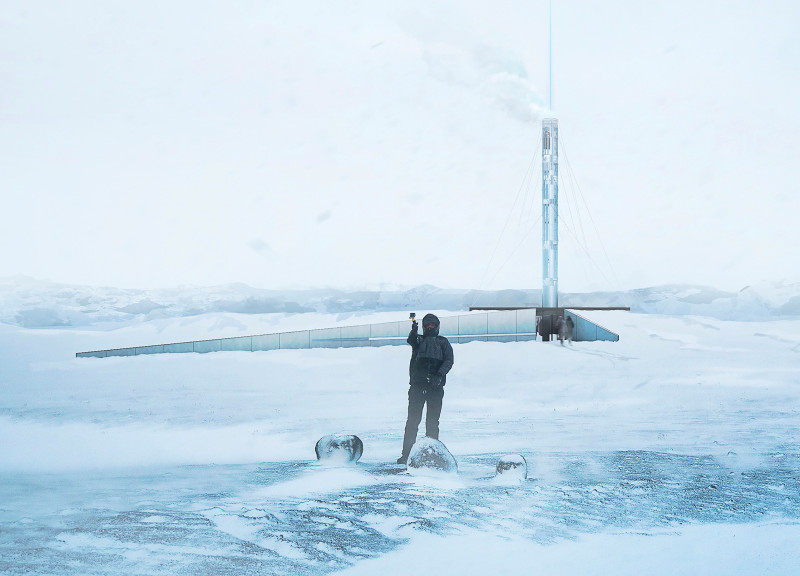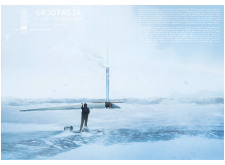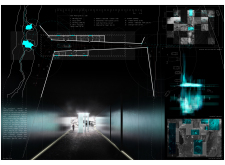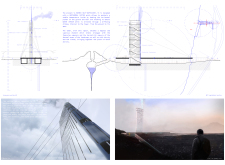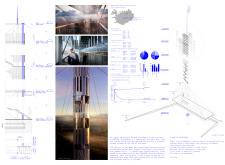5 key facts about this project
GRJÓTAGJÁ is located in a unique geological area that aims to enhance the experience between people and their natural environment. The design draws on the principles of experiential architecture. It creates a connection between visitors and the landscape. The project features a horizontal earthwork combined with a vertical observation tower. This layout reflects themes of introspection and a deep connection to the surrounding nature.
Conceptual Framework
The design is based on the concept of a "Temenos" and "litho stratum," encouraging interaction with the local soil. The layout guides visitors from the parking area towards the tower. As they walk, they engage with the spatial qualities of the site. The balance between the horizontal and vertical elements reinforces the relationship between the architecture and the landscape.
Spatial Organization
The project's layout arranges spaces into clear public and private zones. Public areas include visitor facilities, such as toilets, showers, and a snack bar near the cave entrances. This setup ensures visitor comfort and ease of access. In contrast, private areas house administrative functions, including offices and staff facilities. This thoughtful organization helps maintain a smooth visitor experience while supporting operational needs.
Structural Elements
The observation tower is a central feature, standing tall against the horizontal expanse of the earth. Its height invites exploration and enhances visitors’ views of the landscape. A geothermal system provides energy efficiency, keeping interior spaces at a comfortable temperature. This design element aligns with a commitment to sustainable practices while supporting the overall functionality of the space.
Material Considerations
The project uses locally sourced materials, primarily native earth. This choice demonstrates an awareness of sustainability and local context. By integrating these materials, the design strengthens the connection between the built environment and its surroundings. It also considers factors such as local climate and seismic activity to ensure the structure remains safe and durable over time.
At night, the observation tower glows softly, marking its presence in the landscape. The illumination draws attention to its form while creating a warm atmosphere for visitors. This luminous quality encourages exploration of the site, inviting people to engage with its unique character and natural beauty.


